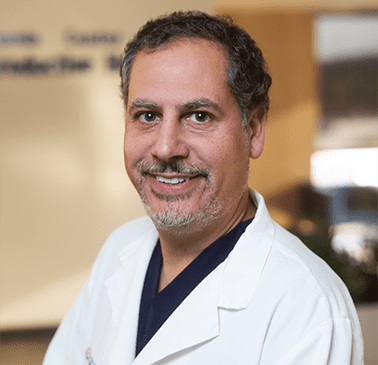Is it Possible to Get Pregnant Without Tubal Reversal?

If you regret having your tubes tied, you’re not alone. Many women decide they’d like to get pregnant even though they previously chose to have a tubal ligation, which is intended to be a permanent form of birth control. One option for trying to get pregnant after having your tubes tied is a procedure known as a tubal reversal in which the fallopian tubes are unblocked and reconnected.
A tubal reversal can have a success rate of 50 to 80 percent in women under the age of 35. If you’re older than 35 or if you’ve been told you’re not a good candidate for a tubal reversal, your next question may be, “Is it possible to get pregnant without tubal reversal?” The fertility experts at the Center for Reproductive Health can answer you questions and help you determine whether you’re a candidate for tubal reversal or if a different option would be better for you.
In Vitro Fertilization (IVF)
For different reasons, many women choose to undergo in vitro fertilization (IVF) rather than having a tubal reversal. IVF is a form of assisted reproductive technology (ART) that involves fertilizing an egg outside a woman’s body. This approach completely bypasses the fallopian tubes. If you decide to have IVF, fertility drugs are injected to help stimulate the development of multiple eggs. This stimulation process continues for seven to nine days.
One enough mature eggs have been produced, your doctor removes them through an outpatient procedure. The eggs that are retrieved are mixed with sperm cells from your partner or from a sperm donor in a laboratory. The cells of the fertilized eggs divide and become embryos. They are cultured in a strictly controlled environment and usually they are incubated for three to five days. They are then implanted into your uterus. If any of the embryos successfully attach to the lining of the uterus, it results in pregnancy.
Mini IVF
An alternative to IVF is a similar type of ART known as mini IVF. With this approach, low dose hormone stimulation is used to induce the growth of a small number of eggs. In most cases a short course of birth control pills is used before beginning treatment. Like traditional IVF, mature eggs are retrieved and fertilized in a lab setting before being implanted in the uterus. The goal of mini IVF is to create only a few high quality embryos. Since fewer embryos are produced, more cycles may need to be done to achieve pregnancy, but using low dose hormones results in fewer side effects and a lower overall cost.
Choosing the Best Option for You
Every woman is different and that there are different factors to consider in determining the best options in getting pregnant. If you’ve had a tubal ligation but aren’t sure that a tubal reversal is right for you, schedule a consultation with the highly experienced fertility team at the Center for Reproductive Health to discuss any questions or concerns you have and to determine the best choices available to you.
Eliran Mor, MD
Reproductive Endocrinologist located in Encino, Santa Monica, Valencia & West Hollywood, CA
FAQ
Reproductive endocrinology and Infertility is a sub-specialty of Obstetrics and Gynecology. In addition to managing medical and surgical treatment of disorders of the female reproductive tract, reproductive endocrinologist and infertility (REI) specialists undergo additional years of training to provide fertility treatments using assisted reproductive technology (ART) such as in vitro fertilization.
Reproductive endocrinologists receive board certification by the American Board of Obstetrics and Gynecology in both Obstetrics and Gynecology and Reproductive Endocrinology and Infertility.
In general, patients should consider consulting with an REI specialist after one year of trying unsuccessfully to achieve pregnancy. The chance of conceiving every month is around 20%, therefore after a full year of trying approximately 15% of couples will still not have achieved a pregnancy.
However, if a woman is over the age of 35 it would be reasonable to see a fertility specialist earlier, typically after 6 months of trying.
Other candidates to seek earlier treatment are women who have irregular menses, endometriosis, fibroids, polycystic ovary syndrome (PCOS), women who have had 2 or more miscarriages, or problems with the fallopian tubes (prior ectopic pregnancy).
Approximately 1/3 of the time cause for infertility is a female factor, 1/3 of the time a male factor, and the remaining 1/3 a couples’ factor.
At CCRH, we emphasize the importance of establishing a correct diagnosis. Both partners undergo a comprehensive evaluation including a medical history and physical exam.
Furthremore, the woman’s ovarian reserve is assessed with a pelvic ultrasound and a hormonal profile. A hysterosalpingogram (HSG) will confirm fallopian tube patency and the uterine cavity is free of intracavitary lesions. A semen analysis is also obtained to evaluate for concentration, motility, and morphology of the sperm.
Additional work up is then individualized to direct the best possible treatment option for each couple.
In vitro fertilization (IVF) is the process that involves fertilization of an egg outside of a woman’s body.
The process starts with fertility drugs prescribed to help stimulate egg development. In your natural cycle, your body is only able to grow one dominant egg, but with stimulation medication we can recruit multiple eggs to continue to grow. After about 8-10 days of stimulation, the eggs are surgically retrieved and then fertilized with sperm in a specialized laboratory. Fertilized eggs are then cultured under a strictly controlled environment within specialized incubators in the IVF laboratory for 3-5 days while they develop as embryos. Finally, embryos (or an embryo) are transferred into the uterine cavity for implantation.
Before deciding if IVF is the right choice, it’s important to sit down with an REI specialist to discuss available treatment options. For some people, other methods such as fertility drugs, intrauterine insemination (IUI) may be the best first choice treatment. At CCRH, we believe each individual couple is unique and not everyone needs IVF.
While not painful, the fertility medications may some side effects including headaches, hot flashes, mood swings, and bloating. The injection sites may also bruise.
Unfortunately, no. Many people think once they start IVF it’s a matter of time that they will be pregnant and have a baby. But according to national statistics per the Society of Assisted Reproduction (SART), on average 40% of assisted reproduction cycles achieve live births in women under age 35. The chances of success then continue to decrease with advancing age.
At CCRH, we employ only evidence-based interventions to ensure patient safety and optimal outcome. While we cannot guarantee a baby, we guarantee that you will receive the best, most advanced, personalized care to help you maximize your chance of a baby.
The average IVF success rate (success measured in live birth rate) using one’s own eggs begins to drop around age 35 and then rapidly after age 40. This is due to the decline in egg quantity and egg quality as a woman ages.
Our clinic’s success rate consistently beats the national average year after year.
Individual insurance plans often do not have any coverage for infertility treatments. If you have a group plan, you can call members services to see if they have coverage for infertility (including consultation/workup and IVF).
After your consultation with our REI specialist, one of our dedicated account managers with sit with you to go over the cost of treatment.




